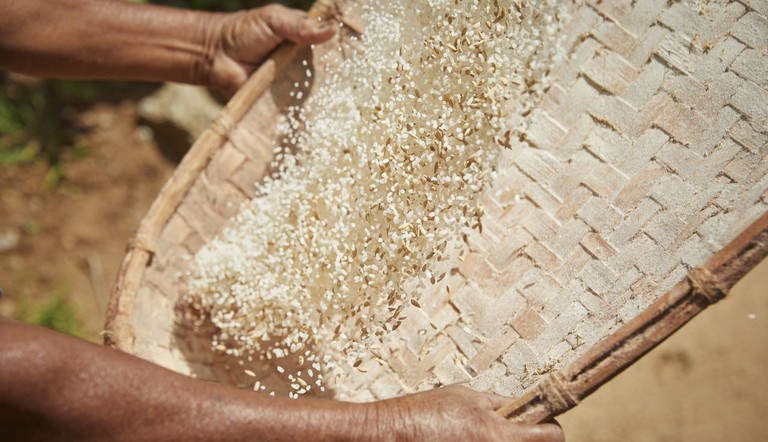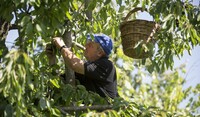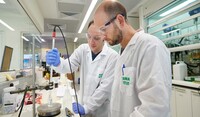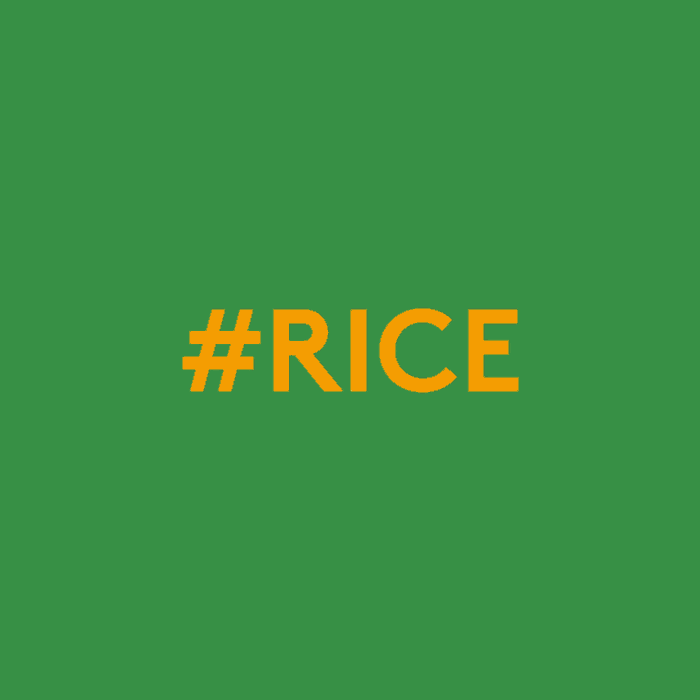
Rice - the most essential ingredient

By combining age-old wisdom with the latest thinking and working together, rice growers are producing crops with higher yields, improved nutritional content, which use inputs more efficiently and protect the environment.
Evolving from a grass species, there is evidence of the first 15,000-year-old domesticated rice grains in South Korea, which is 3,000 years before the first domesticated Chinese rice ¹. Both these grains were the forerunner of the Oryza sativa Asian rice. Its African counterpart Oryza glaberrima was first cultivated 3,500 years ago². Now the grain is grown on all continents of the world, except Antarctica.
World production of rice is at nearly 800 million tonnes, according to the UN FAO, making it the third largest crop after sugar and corn. Since the start of the century, world rice production has jumped by a third. That increase in output was achieved with an increase of just 8.5% in the area of land growing rice, with improved varieties and growing technique driving an increase in yield.
Rice can be a very water-intensive crop, but a simple system, first adopted in Madagascar 30 years ago, has had a dramatic impact on improving yields and water sustainability on rice farms across the world. Called the System of Rice Intensification, fewer seeds are planted than previously and rather than keeping rice fields flooded, the crop is alternately irrigated and drained, giving plants more oxygen and promoting growth. Benefits have included a 20% to 100% increase in yields, a big reduction in the volume of seed needed and up to a halving of water use. For more on the system see: http://sri.ciifad.cornell.edu/
Improved rice production is key to relieving hunger and improving nutrition for millions of people. UN FAO supported research at the International Rice Center is working to increase zinc intake from rice. The center also has ambitious targets of increasing the genetic yield gain of rice by 1.7% a year by 2030 and reducing carbon dioxide emissions from rice production by 28.4 megatons a year. See https://www.cgiar.org/research/program-platform/rice/
Rice still makes up 58% of China’s staple food intake, with 30% of the world’s rice eaten in the country. However, there is an issue with the quality of the crop, with only 9% reaching the highest quality grade. The Syngenta Group, of which ADAMA is a part, has embarked on a Modern Agriculture Platform (MAP) project to use digital technology to help improve rice quality and crop efficiency. By identifying the best seed, understanding consumer needs and improving the growing and storing of rice, quality has been improved by 14% alongside more efficient use of fertilizers and crop protection products. The value of the rice produced has increased by 35%, helping improve the income of farmers involved in the project. The project has already delivered US$400 million in rice sales, with the aim of increasing that figure by five times by 2025.
¹ Korea Timeshttps://www.koreatimes.co.kr/www/opinion/2019/11/355_268230.html
² Maddox, Gregory. Sub-Saharan Africa: An Environmental History (2006)
³ International Rice Center http://ricepedia.org/rice-as-food/the-global-staple-rice-consumers
Rice is nice
- Rice provides a fifth of daily calories for more than 3.5 billion people
- Colorful rice is good for you. Brown rice contains vitamins and fiber; red rice is rich in iron
Image Gallery
Related Articles

How the Cazado® Launch Embodies Value Innovation

From Market, For Market: How Grower Feedback Drives Innovation

